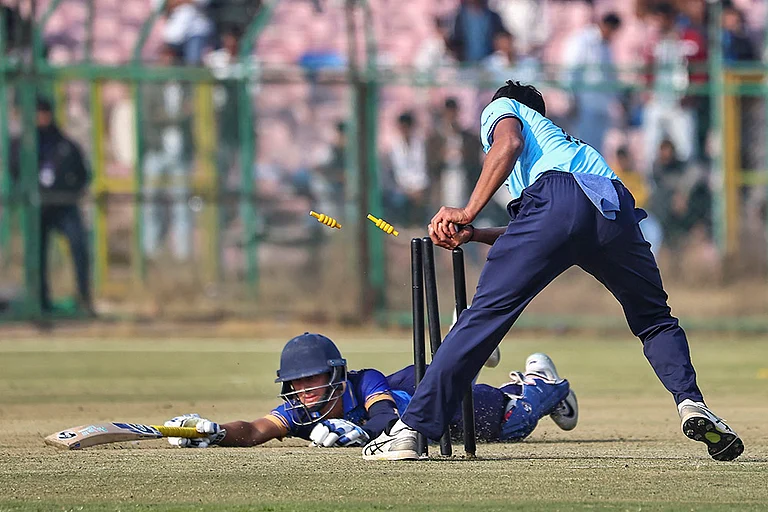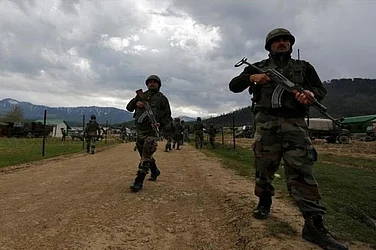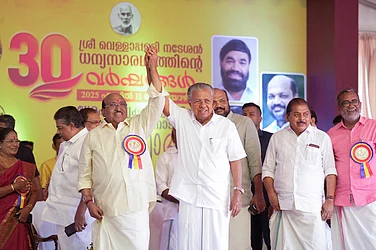IT is something the eastern states have ignored for decades. But now, the moment of reckoningseems to have arrived. The threat has assumed alarming proportions and could eventuallylead to a major disaster. Illegal mining, continuing for years in the West Bengal- Biharborder region, is now threatening major portions of National Highway 2 (better known asthe Grand Trunk Road) and mainline railway tracks on which ply a large number of localtrains and critical national ones like the Howrah and Bhubaneshwar Rajdhani Expresses, theDelhi- Howrah Poorva Express and the Kalka Mail, indeed nearly every express or mail trainthat connects Delhi and Calcutta.
A detailed report prepared by the Dhanbad- based Directorate General of Mine Safety ( DGMS )says rampant illegal mining in the region in pits abandoned by two Coal India Ltd ( CIL )subsidiaries Bharat Coking Coal Ltd ( BCCL ) and Eastern Coalfields Ltd ( ECL) have led to at least 22 villages and a few industrial towns, with an estimatedcombined population of a million, practically dangling on an empty pit.
The problem: illegal miners some claim even legitimate coal companies haveburrowed through the earth under the Grand Trunk Road and the railway tracks to hunt forcoal. And when they abandon these mines, they dont fill up the trenches with sand orearth, as is the rule. The result: in many parts here, people are living on a thin stripof earth under which yawns the empty caverns of abandoned mines. The earth could cave inany moment.
Saysthe DGMS report: Many of these abandoned mines are under the Grand Trunk Road andthe main line of Eastern Railway. The Rajdhani, Poorva, Kalka and Shatabdi pass throughthe line, some of which is above semi- vacuum area. Even the Standing Committee onRailways in Parliament had expressed deep concern over this in its 11th report. P.L. Munshi, technical secretary to the CMD , BCCL , told Outlook that there are 13 or 14 pits close to theGrand Trunk Road which could cause irreparable damage to the highway and adjacent railwaylines.
This is serious and needs to be looked into immediately, says Haradhan Roy, former MPfrom Asansol and also member of the Standing Committee on Coal. Roy, who worked closelywith the DGMS , recently wrote a detailed report to West Bengal chief minister Jyoti Basuand BCCL and ECL authorities, highlighting the gravity of the situation. Adds Sanat KumarChattaraj, a former senior manager with CIL : There are hugecraters of boiling gaseswhich the coal companies have not bothered to fill in time. So, there remains this risk ofsubsidence.
Railway ministry officials are, expectedly, aghast at the continued negligence of the coalministry. Weve had some isolated cases where areas lose to railway tracks weredamaged. But these were far from the trunk lines. Still, it can be a serious problem ifnot tackled in time, says Indra Ghosh, executive director (safety), Railway Board.Agrees N. C. Bindlash, additional member (civil engineering), Railway Board: Barringone case, the railways have never had a serious cases of track damage from subsidence dueto illegal mining but this is serious and needs to be looked into immediately.
An official spokesperson of the railways said two earlier incidents of damage close to thetracks in the region were noted near the Kalipahari and Thaparnagar stations in WestBengal. Now, we have permanent guards there who keep regular checks on visiblecracks on the earth, if any, or cases of underground fire close to the tracks, thespokesperson said, adding that Eastern Railway officials in Dhanbad and Asansol were inconstant touch with all collieries and holding regular meetings on the issue. Observerssay the only time the railways have got into serious trouble over subsidence was a fewyears ago in Jodhpur district in Rajasthan when the authorities abandoned a 40- km trackbetween Makrana and Parvatsar after private operators continued with open- cast miningvery close to the tracks for a special variety of marble.
"We're handling this issue on a war footing. Our first priority is the railways. There is a jointmeeting planned with DGMS to look into areas where illegal mining is going on. EasternRailway officials are also expected to attend. We're taking all steps possible to avertany danger," Munshi says. "Necessary equipment has been sent to the sites withadequate police reinforcements and we hope the damage will be rectified before it assumesalarming proportions," says he. CIL officials declined comments. In a recent report,the Railway Safety Review Committee, headed by former Supreme Court judge H. R. Khanna,focused on a comprehensive safety plan for railway tracks and spelt out possibilities forinvestment in the region. According to the panel, 25 per cent of the tracks nationwidehave been classified as unfit for use. Ironically, 30 per cent of these tracks are in thestates of West Bengal and Bihar.
COAL ministry sources told Outlook that the DGMS had identified a number of local police stations of Dhanbad and Asansol which wereallowing the coal mafia to illegally mine in abandoned pits at Egara, Baraboni, Barakar,Rupnarayanpur, Kulti, Bansara, Nimcha, Siasrole, J. K. Nagar and Ronai areas in theregion. Strangely, officials of BCCL and ECL which have filled some of the pits atSirpur, Sodepur, Kajora, Selampur and Mugma areas have told the West Bengalgovernment and the coal ministry that they do not have sufficient funds to fill the largenumber of abandoned pits and need funds, either from the ministry or the state government.Recently, Trinamul Congress leader Mamata Banerjee raised the issue with the PMO andsought funds. The comprehensive rehabilitation package is estimated at a huge Rs 15,000crore.
Sources say illegal mining has flourished in the subdivision in the last few months. Lastfortnight, one person was killed and several injured when the roof collapsed in an illegalcolliery at Bansra in Ranigunj. Citing an example, a senior DGMS official, speaking onconditions of anonymity, told Outlook that illegal mining by the local coal mafia and reckless, unscientific excavation by BCCL haveexposed an estimated 5,000 villagers of Borira to grave risks. The area has already beendeclared "dangerous" by A. Wahid, deputy director- general of DGMS . Wahid hasalso asked the state government to immediately evacuate the villagers. Huge cracks haveappeared on the Kulti- Borira road to the village. As a result, ambulances and fire-fighting vehicles cannot reach the village where more than 25 acres of land have caved inand at least 32 houses destroyed. "A mine abandoned since '60 created a vacuumunderground. This was aggravated by regular explosions in the nearby collieries of BCCL .Anytime it could lead to subsidence," the official said.
The crude irony of the situation is that coal is mined illegally by those people whose veryvillages are at the risk of caving in. For this suicidal labour, they get a pittance of Rs80 per bag from the mafia.






















